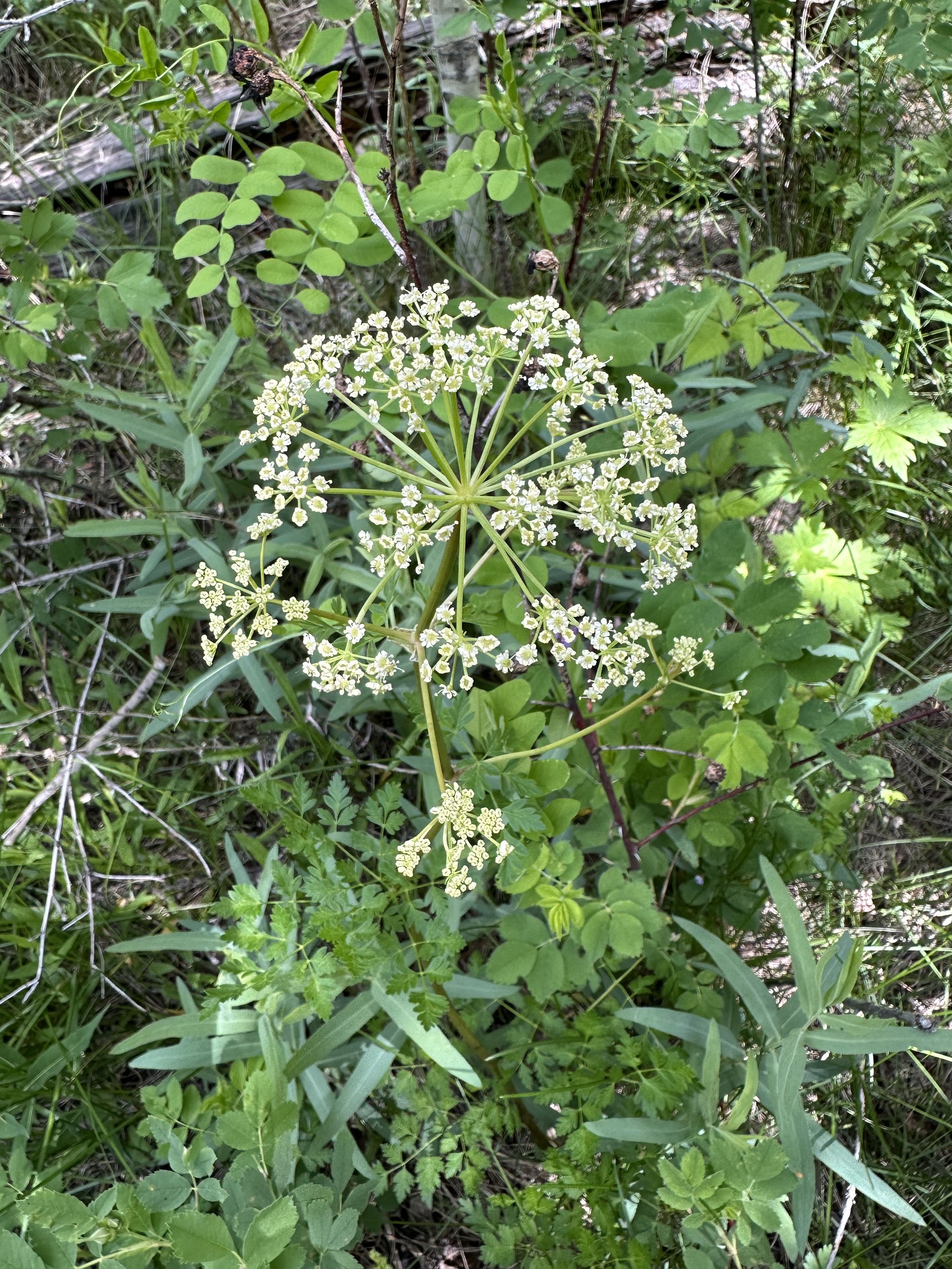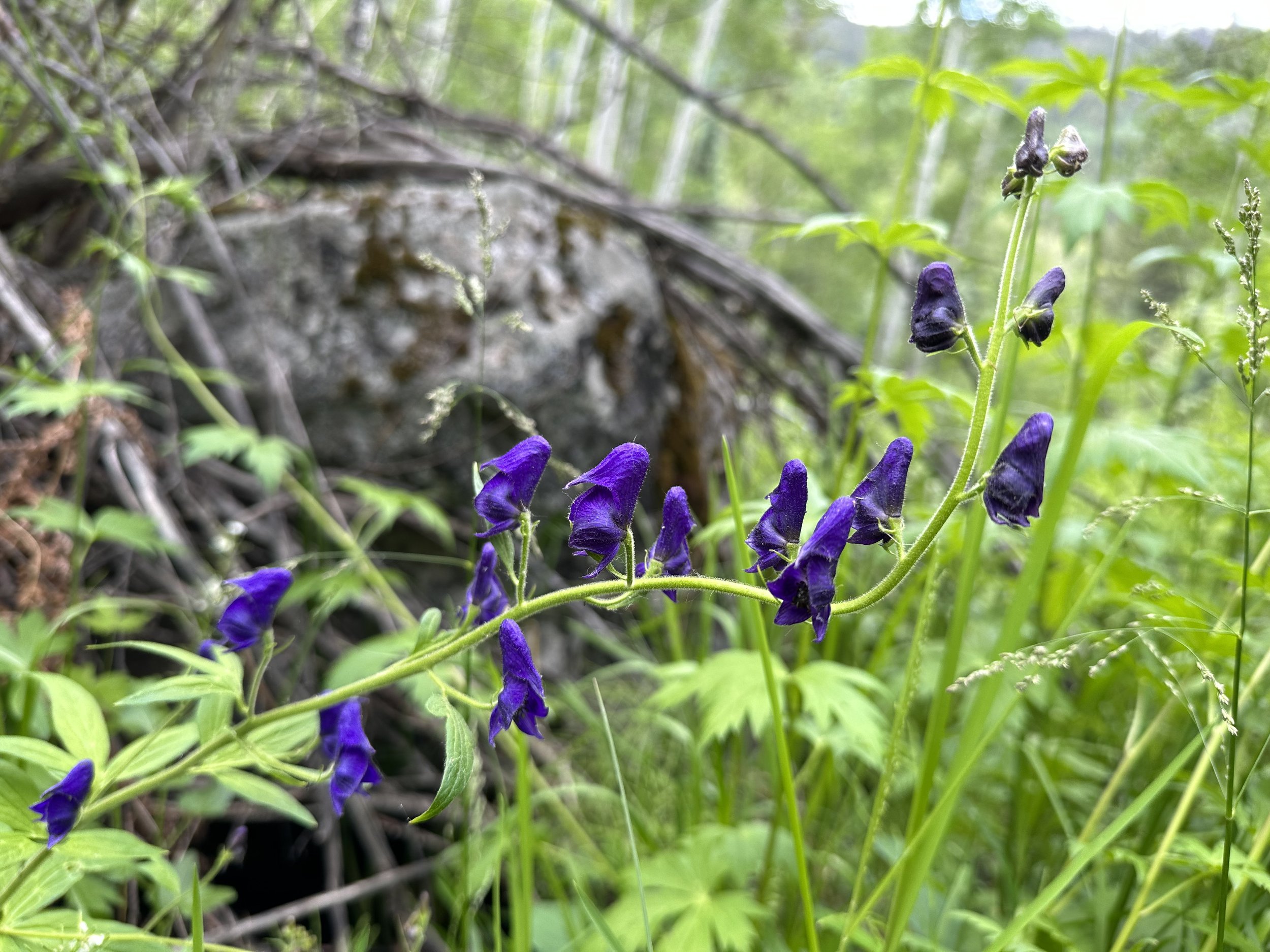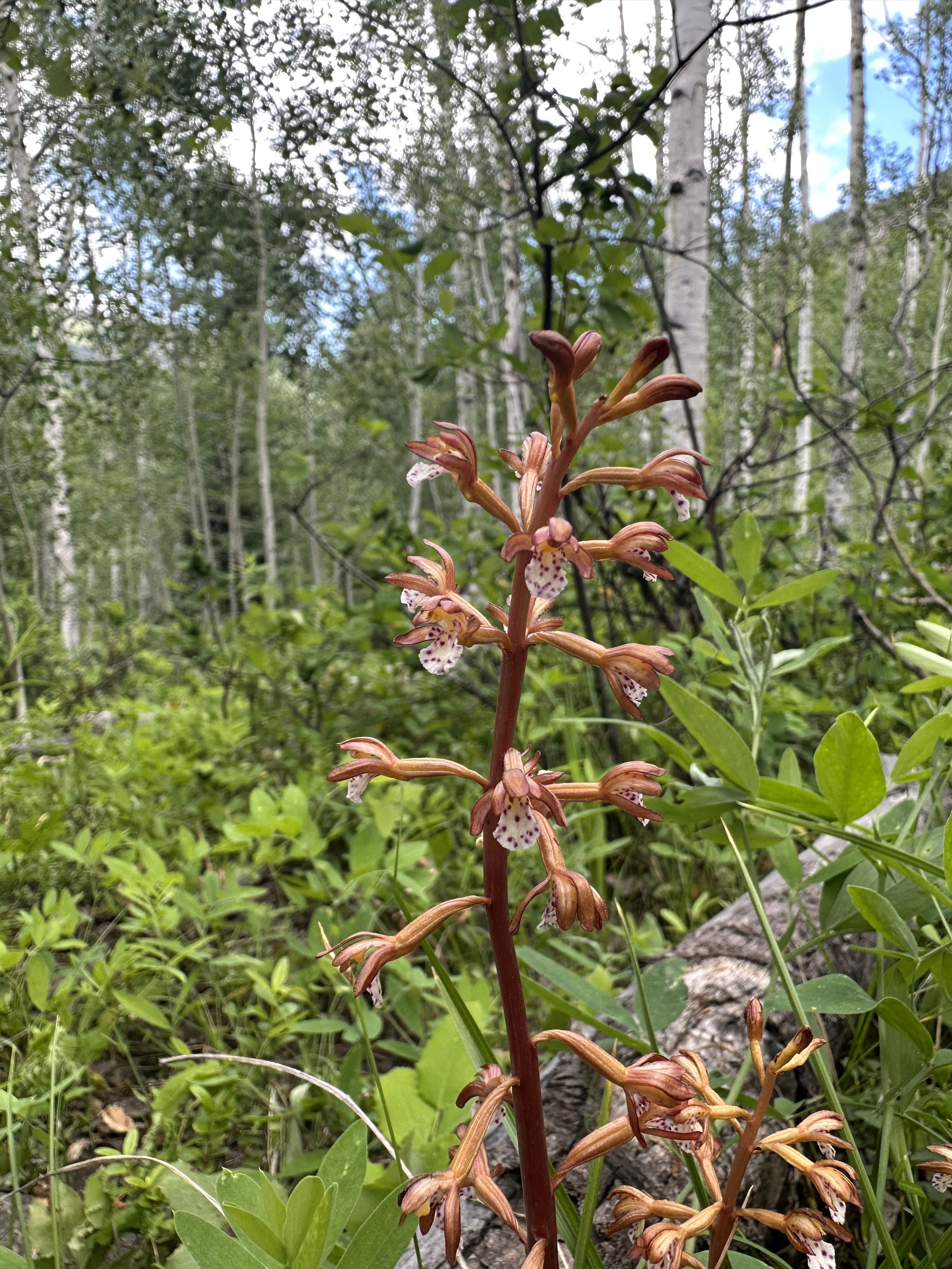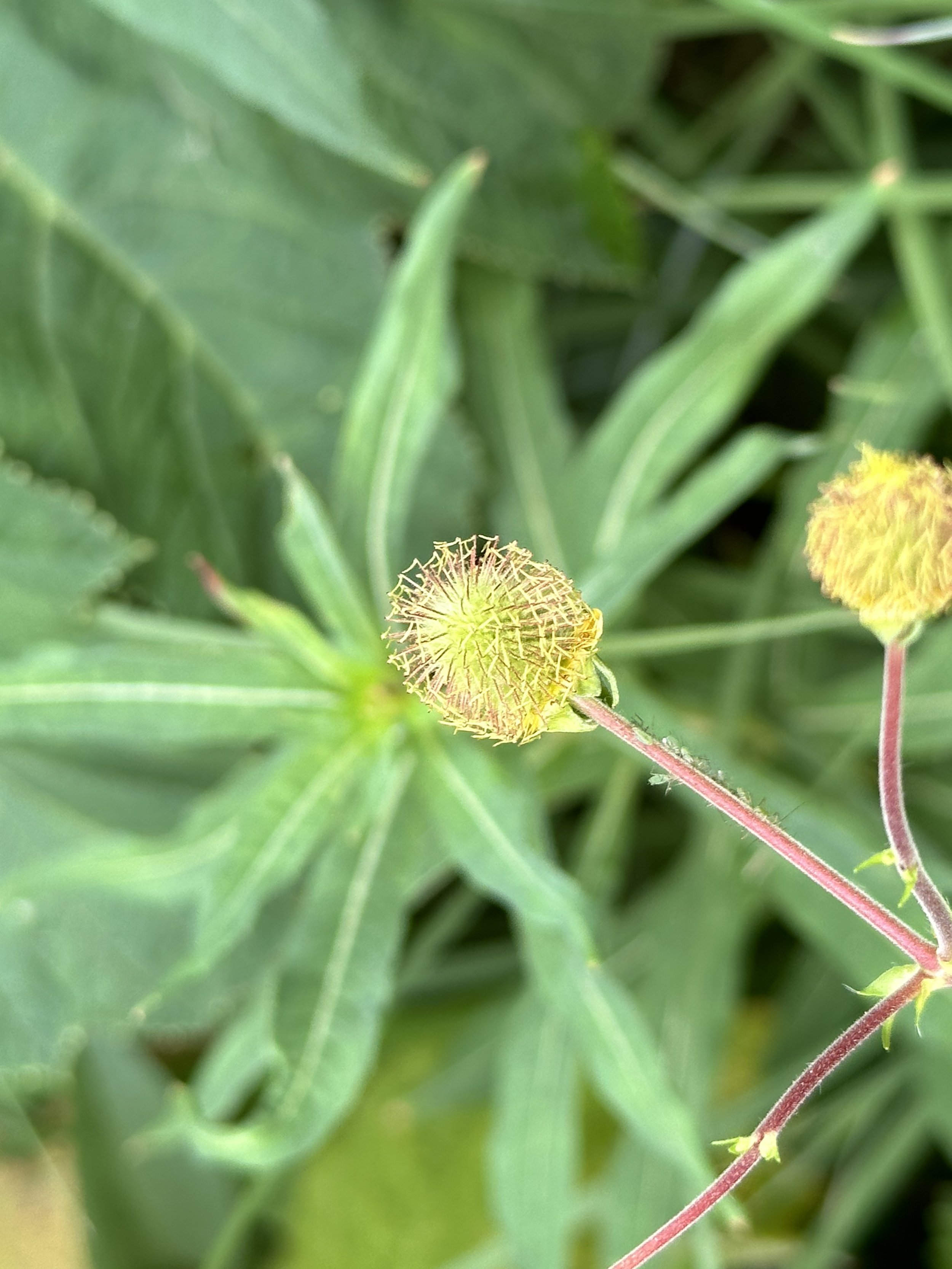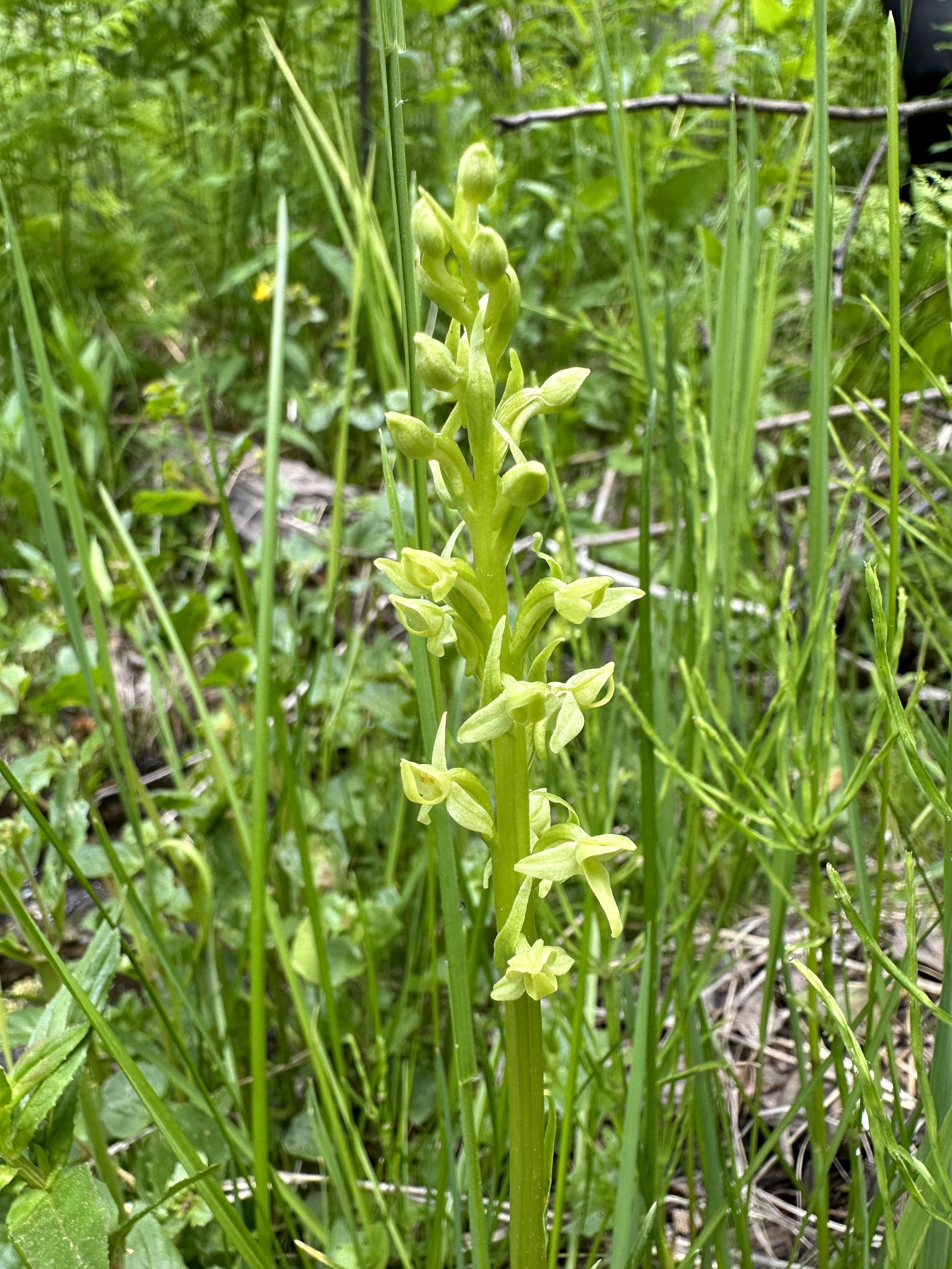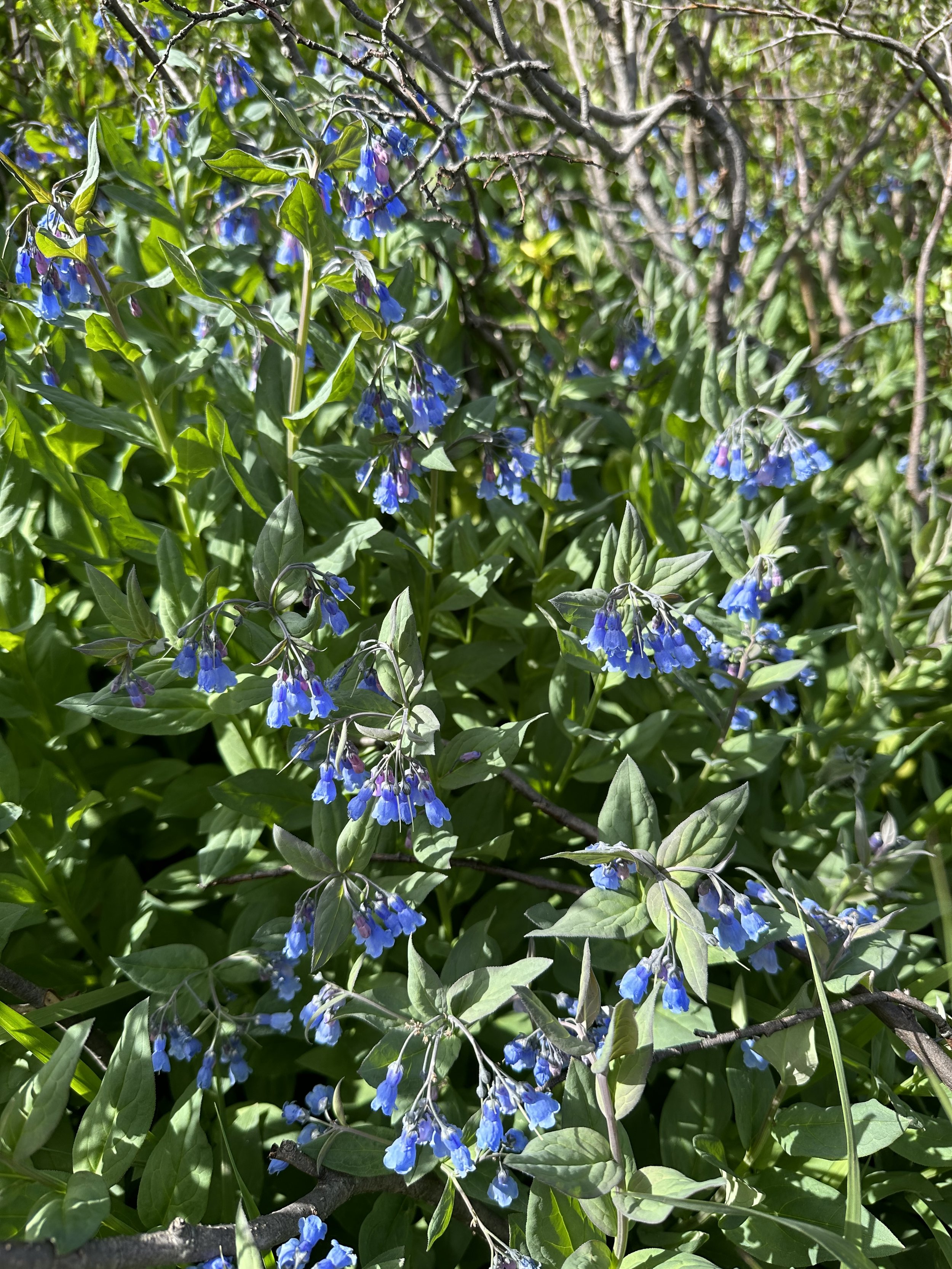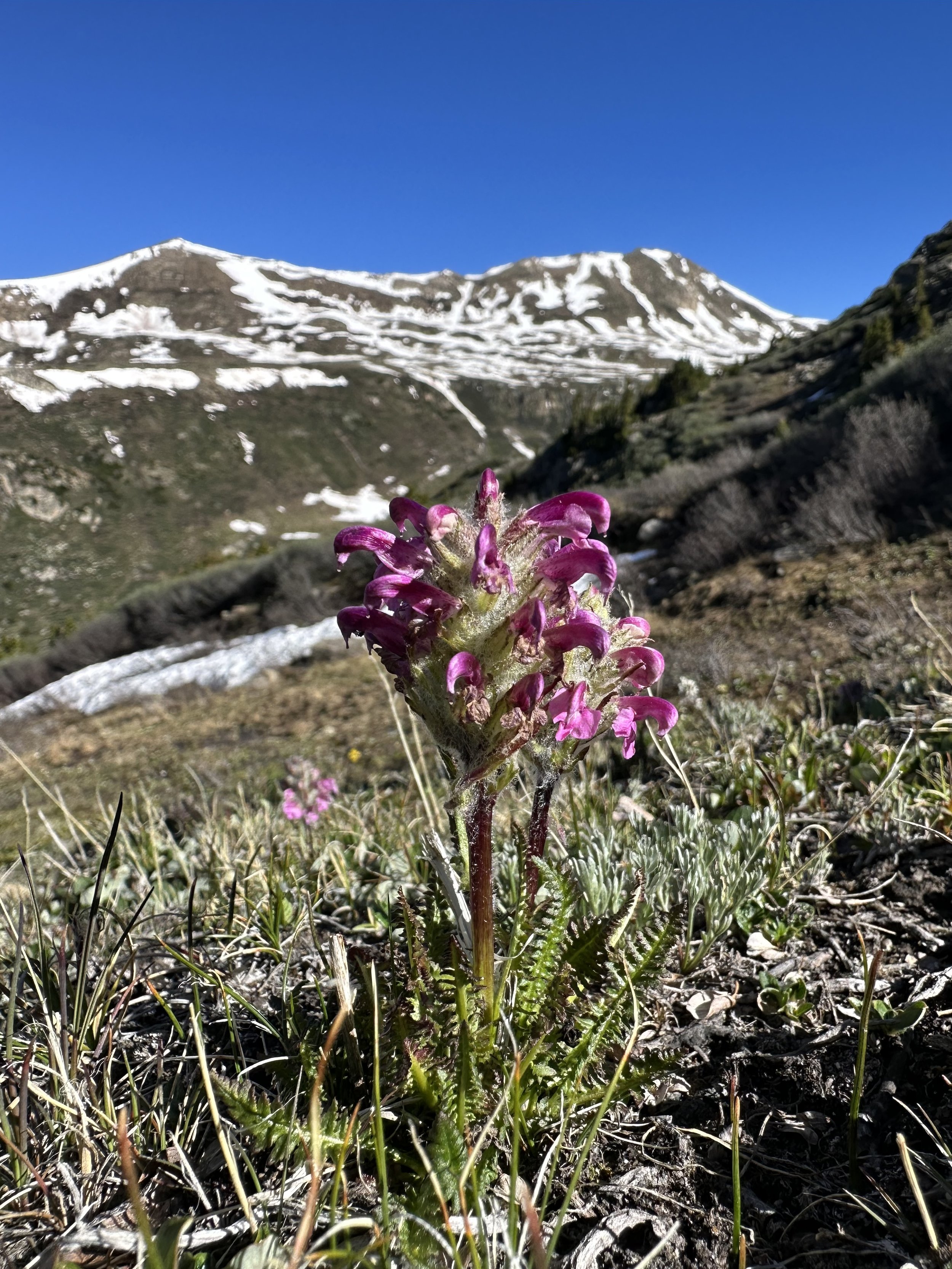Apocynum androsaemifolium, June 30, 2023
Common & scientific name
Spreading dogbane, Apocynum androsaemifolium
Family
Dogbane, Apocynaceae
Location
Aspen grove below Highway 82, 8,600’
Fun, weird, helpful, or little known fact
Called the “bane of dogs” owing to the toxic milky sap in its stems, our native dogbane with its lovely but diminutive white & pink-striped flowers belongs to the same family as oleanders.















